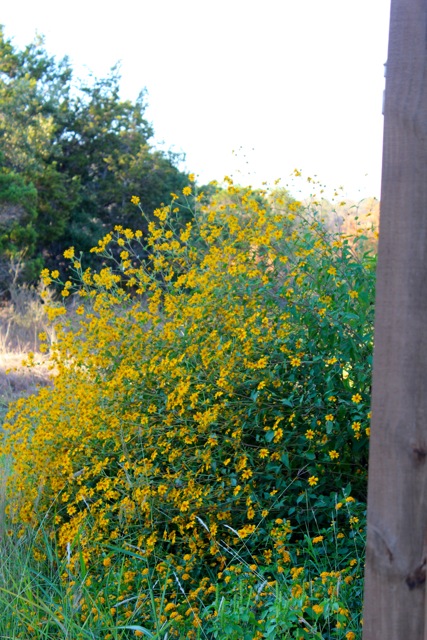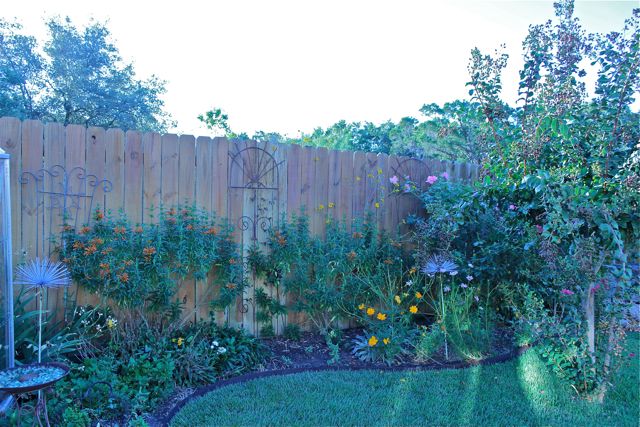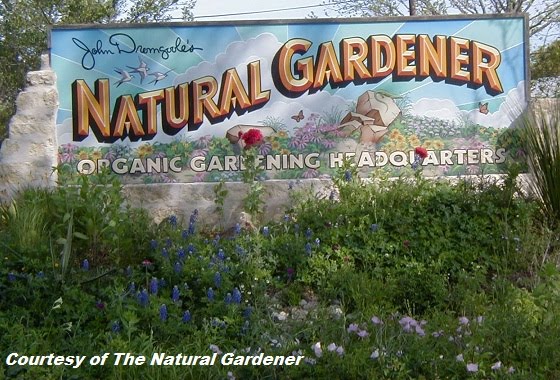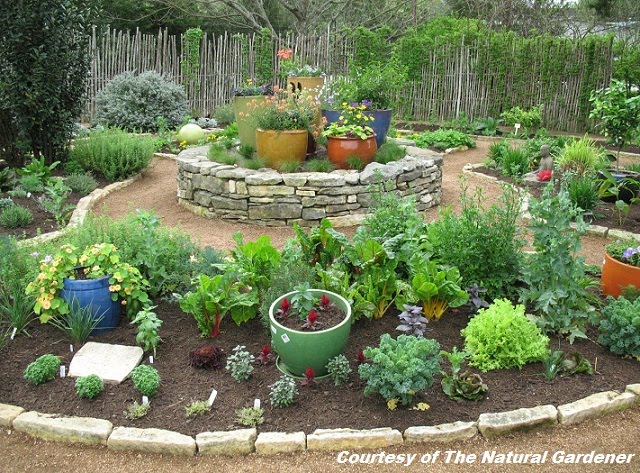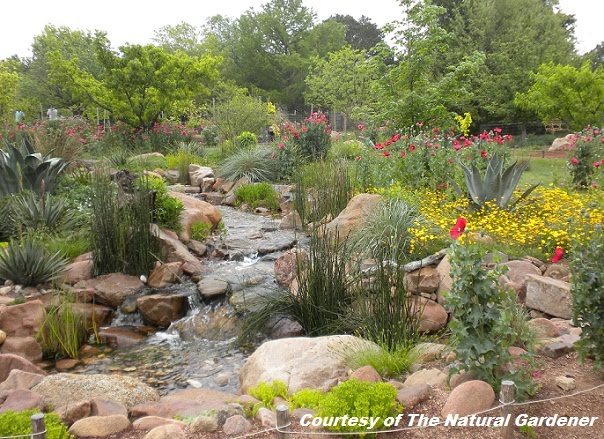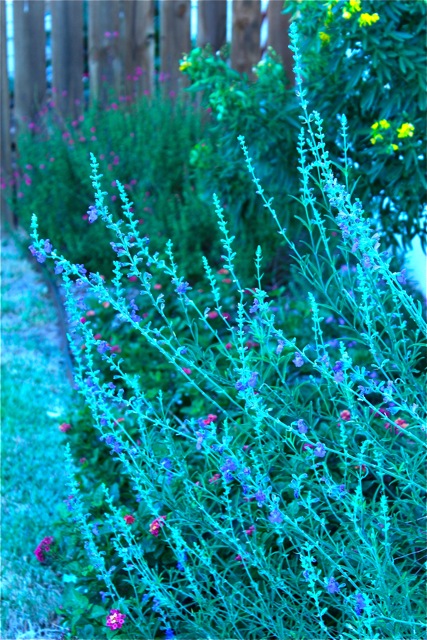Austin Nurseries Giveaway: Emerald Garden Nursery & Water Garden
 Isn’t this a beautiful fountain?
Isn’t this a beautiful fountain?
The birds love to perch on the pineapple and drink from the bubbling water.
I love to listen to the sound of moving water in the garden as I garden or just sit outside. (The gardening part is often, the sitting part, rare!)
This fountain is from the great folks at Emerald Garden.
They helped me find the right water feature for my landscape, they came out and set it up and got it all running and told me everything I needed to know.
They answered my questions about caring for it.
If you haven’t already left me a comment to enter the Austin Nurseries Giveaway for the Emerald Garden Gift certificate, read on down for your chance to win!
If you have entered, I just wanted to add this to my post and show off my fabulous fountain so you can see firsthand what great water features they have to offer.
 As part of Support your Independent Garden Center month, several Austin bloggers are posting about local nurseries every Wednesday in October. Today, eight Austin bloggers are offering 8 exciting giveaways as part of this effort. Visit the blogs listed below to enter and win great prizes from participating nurseries. Visit all 8 to maximize your chances to win.
As part of Support your Independent Garden Center month, several Austin bloggers are posting about local nurseries every Wednesday in October. Today, eight Austin bloggers are offering 8 exciting giveaways as part of this effort. Visit the blogs listed below to enter and win great prizes from participating nurseries. Visit all 8 to maximize your chances to win.
Leave a comment on my blog here today, and you’ll be entered to win a $50 gift certificate from Emerald Garden Nursery & Water Garden.
Contest rules are listed at the end of this blog post.
As we ease into fall we want to give back to the wonderful local nurseries that have helped us enjoy our gardens over the years. We know nurseries have weathered tough times lately, with the downturn in the economy and the drought, so we’re encouraging other gardeners to support them with their gardening dollars.
Cooler night-time temperatures and warm (but not baking) soil mean it’s time to get back into the garden. It’s the perfect time to replace plants that didn’t make it through the summer, make some changes to a more drought-tolerant garden or plan a new garden project to get plants established over the winter.
One of my favorite Austin nurseries is Emerald Garden Nursery and Water Garden. Owned by Trey Wyatt and Luke Hogan and managed by Jeff Yarbrough, Emerald Garden is located at 5700 Highway 290 West, just before the “Y” in Oak Hill.
For many years, I have enjoyed their plants in my garden and one of their fountains in my back yard. The birds love the fresh bubbling water (when it’s not restricted) and the sound of water in the garden is so peaceful.
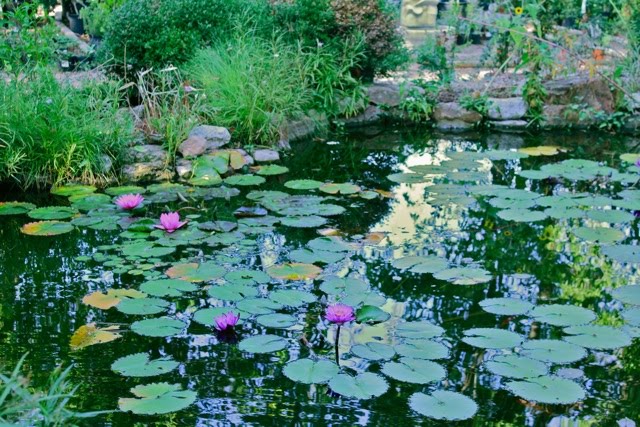 The demonstration water features are woven all through the nursery, designed to inspire creativity. Water lilies and a wide range of other water plants fill the ponds and fountains.
The demonstration water features are woven all through the nursery, designed to inspire creativity. Water lilies and a wide range of other water plants fill the ponds and fountains.
 They also have an excellent supply of disappearing fountains in every style, shape and size.
They also have an excellent supply of disappearing fountains in every style, shape and size.
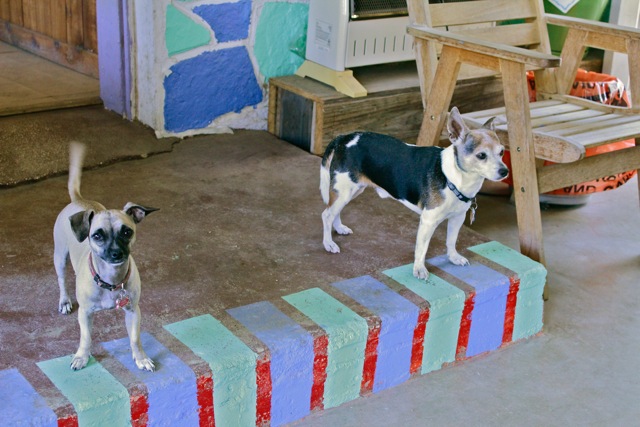 Need help? These friendly staff members will be happy to befriend you and show you around.
Need help? These friendly staff members will be happy to befriend you and show you around.
 Their extensive statuary collection covers every style imaginable, from Zen to formal to whimsical. If you’ve lost some plants during this drought, am interesting piece of garden art might be just the thing for that empty spot.
Their extensive statuary collection covers every style imaginable, from Zen to formal to whimsical. If you’ve lost some plants during this drought, am interesting piece of garden art might be just the thing for that empty spot.
 Sometimes I wonder if the decor is there to accent the plants or the plants are there to accent the decor.
Sometimes I wonder if the decor is there to accent the plants or the plants are there to accent the decor.
 Either way, Emerald Garden has what you’re looking for.
Either way, Emerald Garden has what you’re looking for.
 And if you don’t want to plant anything else in the ground right now, they have a broad selection of glazed and terra cotta pottery.
And if you don’t want to plant anything else in the ground right now, they have a broad selection of glazed and terra cotta pottery.
 Healthy specimens of trees, shrubs, vines, agaves, cacti, succulents, perennials and annuals await you around every corner. No matter what’s on your list, you’re sure to find it at Emerald Garden. And you’ll enjoy a magical tour through their delightful nursery. You can learn more about Emerald Garden here.
Healthy specimens of trees, shrubs, vines, agaves, cacti, succulents, perennials and annuals await you around every corner. No matter what’s on your list, you’re sure to find it at Emerald Garden. And you’ll enjoy a magical tour through their delightful nursery. You can learn more about Emerald Garden here.
1. You must leave a comment on this post to enter.
2. Each participating blog will hold its own random drawing, so leave a comment on each blog to enter all the giveaways.
3. Only one comment per person per giveaway.
4. Participating bloggers and their families are ineligible to win.
5. Giveaway ends at 11:59 pm on 10/26.
6. Winners will be announced on each blog on 10/27.
7. Winners must go to the nursery with a photo ID and pick up their prize in person within two weeks of winning. Prizes will not be mailed.
J Peterson Garden Design — $50 gift certificate from The Great Outdoors
Go Away, I’m Gardening — $100 gift certificate from Sunshine Landscape and Garden Center
Great Stems — $50 gift certificate from Hill Country Water Gardens & Nursery
The Whimsical Gardener — $25 gift certificate from It’s About Thyme
Rock Rose — $50 gift certificate from Shoal Creek Nursery
Digging — $100 gift certificate & a Fall Power Package (valued at $50) from Barton Springs Nursery.
Growing Optimism — $25 gift certificate from the Natural Gardener.
Visit the other blogs for more chances to win and visit the nurseries for a great local gardening experience.
Leave your comment below for your chance to win the $50 gift certificate from Emerald Garden Nursery & Water Garden.


